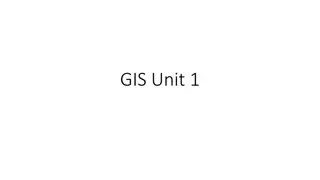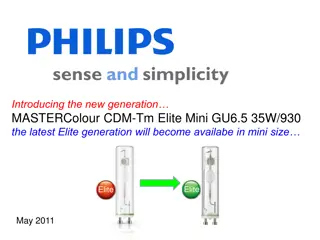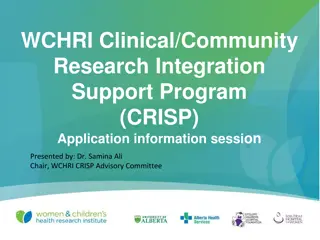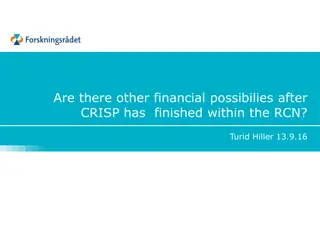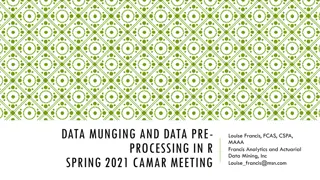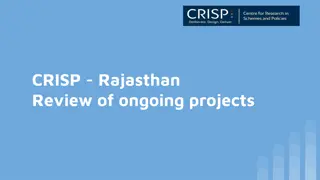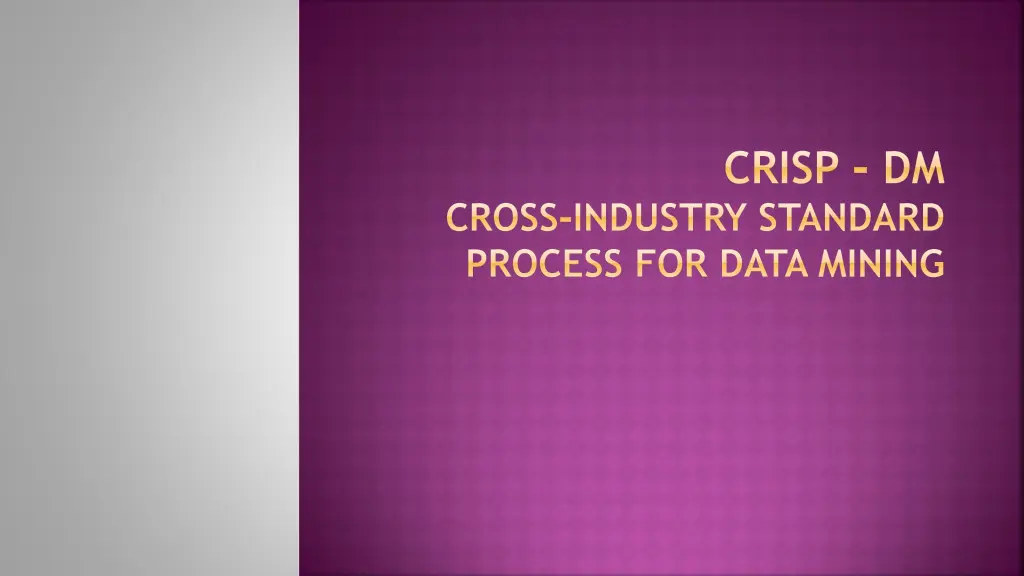
Understanding CRISP-DM: Cross-Industry Data Mining Standard Process
Discover the CRISP-DM model, a leading approach for data mining projects. Learn about its stages like Business Understanding, Data Preparation, Modeling, Evaluation, and Deployment. Explore how experts use this process to tackle data mining challenges effectively.
Download Presentation

Please find below an Image/Link to download the presentation.
The content on the website is provided AS IS for your information and personal use only. It may not be sold, licensed, or shared on other websites without obtaining consent from the author. If you encounter any issues during the download, it is possible that the publisher has removed the file from their server.
You are allowed to download the files provided on this website for personal or commercial use, subject to the condition that they are used lawfully. All files are the property of their respective owners.
The content on the website is provided AS IS for your information and personal use only. It may not be sold, licensed, or shared on other websites without obtaining consent from the author.
E N D
Presentation Transcript
CRISP DM CROSS-INDUSTRY STANDARD PROCESS FOR DATA MINING
INTRODUCTION CRISP-DM stands for Cross Industry Standard Process for Data Mining. It is a data mining process model that describes commonly used approaches that expert data miners use to tackle problems. Polls conducted in 2002, 2004, and 2007 show that it is the leading methodology used by data miners. The only other data mining standard named in these polls was SEMMA. However, 3-4 times as many people reported using CRISP-DM. A review and critique of data mining process models in 2009 called the CRISP-DM the "de facto standard for developing data mining and knowledge discovery projects." Other reviews of CRISP-DM and data mining process models include Kurgan and Musilek's 2006 review, and Azevedo and Santos' 2008 comparison of CRISP-DM and SEMMA.
C R IS P D M
CRISP - DM 1. Pemahaman Bisnis(Business Understanding) Merupakan tahap awal yaitu pemahaman penelitian, penentuan tujuan dan rumusan masalah data mining. 2. Pemahaman Data(Data Understanding) Dalam tahap ini dilakukan pengumpulan data, mengenali lebih lanjut data yang akan digunakan. 3. Pengolahan Data(Data Preparation) Tahap ini adalah pekerjaan berat yang perlu dilaksanakan secara intensif. Memilih kasus atau variable yang ingin dianalisis, melakukan perubahan pada beberapa variable jika diperlukan sehingga data siap untuk dimodelkan. 4. Pemodelan(Modeling) Memilih teknik pemodelan yang sesuai dan sesuaikan aturan model untuk hasil yang maksimal. Dapat kembali ke tahap pengolahan untuk menjadikan data ke dalam bentuk yang sesuai dengan model tertentu. 5. Evaluasi (Evaluation) Mengevaluasi satu atau model yang digunakan dan menetapkan apakah terdapat model yang memenuhi tujuan pada tahap awal. permasalahan yang tidak dapat tertangani dengan baik serta mengambil keputusan hasil penelitian. 6. Penyebaran (Deployment) Menggunakan model yang dihasilkan seperti pembuatan laporan atau penerapan proses data mining pada departemen lain. Kemudian menentukan apakah ada










